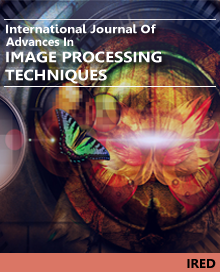Detection of skin ulcer at early stages using otsu’s Segmentation and naïve bayes classifier
Author(s) : BHATT BHUMIKA, PATEL JIGNA J
 Abstract
Abstract
Skin Ulcers are likely to be caused by the increase in UV radiation which occurs as a result of ozone depletion with the culture of the sun. Major other causes of skin cancer are burns, scars, sores, radiation or certain chemicals like arsenic. Moreover, tattooing is considered as a fashion in the younger generations, unaware of the fact that it can cause a skin cancer. However, if detected early, all forms of skin cancers are curable. This relies heavily on classifying skin lesion at an early stage. Skin lesion classification involves data from patient concerning both, their individual features and wound origin to be collected. Skin ulcer images and medical diagnosis about its grade can be stored, thereby submitting these data to the data mining procedures in order to detect some relations between them.Detection of Stage I skin ulcers become more difficult by unaided visual inspection. Therefore, patients are more prone towards developing Stage –II and Stage –III skin ulcers. Research has been done to develop a low-cost, non-contact, imaging-based Stage-I skin ulcer detection system for use by support staff in assisted living and skilled nursing facilities to increase their ulcer detection rate. Also, study of necessary algorithms makes it easier to detect skin ulcer and heal the patient rather in early stages which gives a visual aid in detection of skin lesion at early stage but it does not help the dermatologists to exactly classify the skin lesion into malignant and non-malignant class. To overcome this problem further classification of skin lesion is required. This paper presents implementation of skin lesion detection by classifying the skin cells into various classes of malignant and non-malignant cells. Initially, skin lesion is segmented using Otsu’s thresholding technique and affected region is found followed by feature extraction and classification. Studies show that Naive Bayes classifier classifies the lesion giving highest accuracy among all the other classifiers. Therefore, for further classification Naive Bayes Classifier is used which can help the medical experts in classifying the skin lesion into various classes of malignant and non-malignant cells. The experiments are conducted on different skin types. The experiments results showed that Naive Bayes classifiers gave high accuracy and the proposed method for detection of skin ulcers can effectively improve the detection of skin ulcers.Further, result analysis using various skin lesions are also presented in the paper.
 Full Paper PDF
Full Paper PDF
